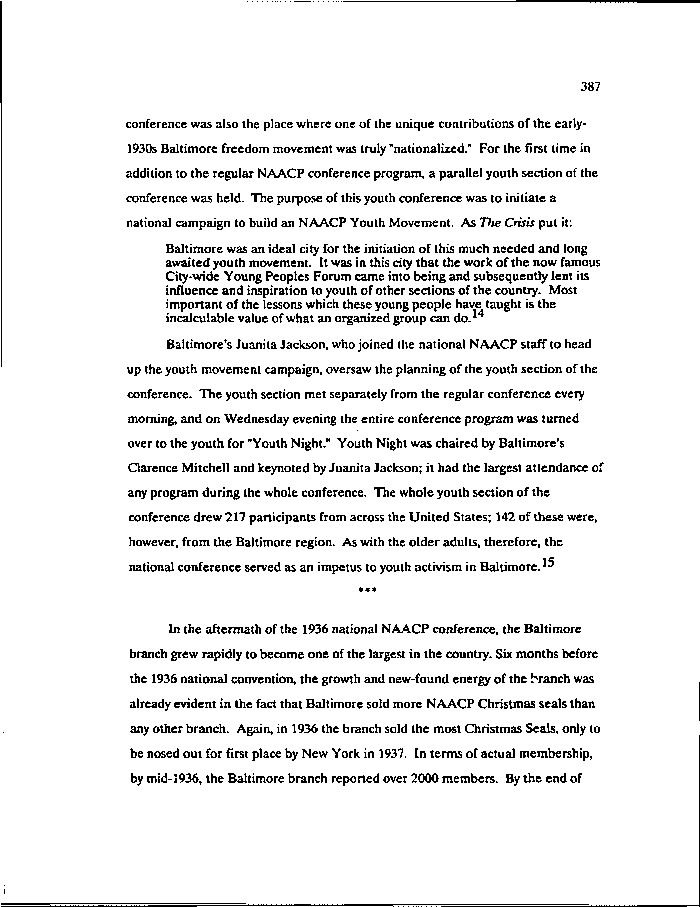|
387
conference was also the place where one of the unique contributions of the early-
1930s Baltimore freedom movement was truly "nationalized." For the first time in
addition to the regular NAACP conference program, a parallel youth section of the
conference was held. The purpose of this youth conference was to initiate a
national campaign to build an NAACP Youth Movement. As Tlie Crisis put it:
Baltimore was an ideal city for the initiation of this much needed and long
awaited youth movement. It was in this city that the work of the now famous
City-wide Young Peoples Forum came into being and subsequently lent its
influence and inspiration to youth of other sections of the country. Most
important of the lessons which these young people have taught is the
incalculable value of what an organized group can do.
Baltimore's Juanita Jackson, who joined the national NAACP staff to head
up the youth movement campaign, oversaw the planning of the youth section of the
conference. The youth section met separately from the regular conference every
morning, and on Wednesday evening the entire conference program was turned
over to the youth for "Youth Night." Youth Night was chaired by Baltimore's
Clarence Mitchell and keynoted by Juanita Jackson; it had the largest attendance of
any program during the whole conference. The whole youth section of the
conference drew 217 participants from across the United States; 142 of these were,
however, from the Baltimore region. As with the older adults, therefore, the
national conference served as an impetus to youth activism in Baltimore.1^
In the aftermath of the 1936 national NAACP conference, the Baltimore
branch grew rapidly to become one of the largest in the country. Six months before
the 1936 national convention, the growth and new-found energy of the branch was
already evident in the fact that Baltimore sold more NAACP Christmas seals than
any other branch. Again, in 1936 the branch sold the most Christmas Seals, only to
be nosed out for first place by New York in 1937. In terms of actual membership,
by mid-1936, the Baltimore branch reported over 2000 members. By the end of
|

